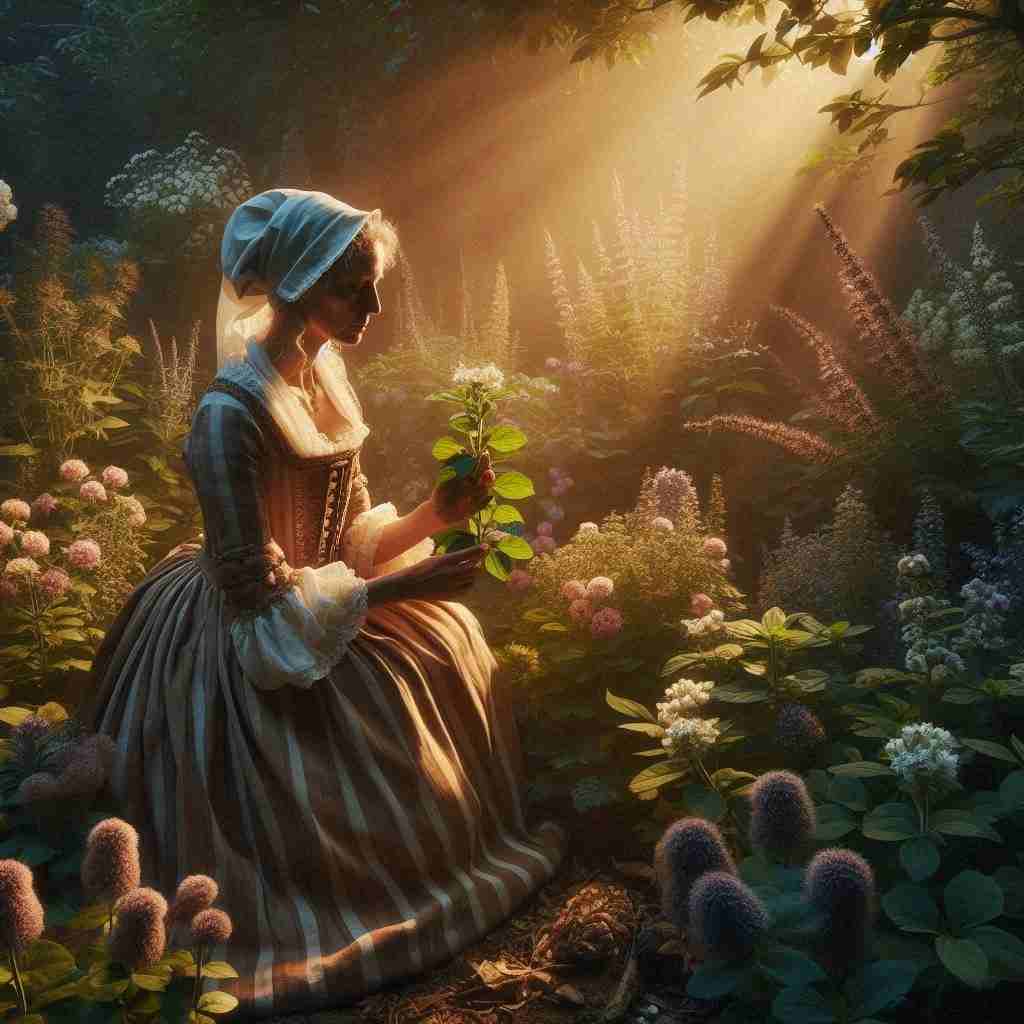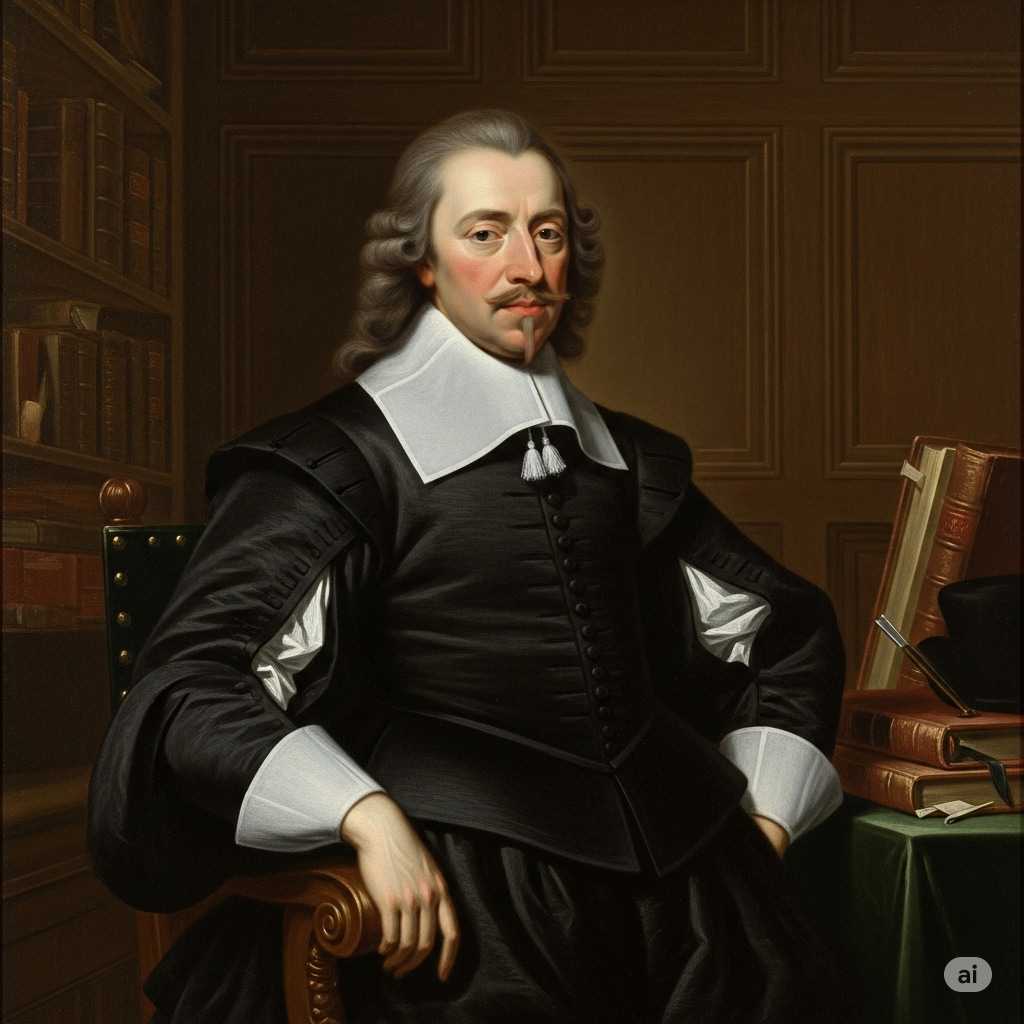Unprofitableness
Henry Vaughan
1621 to 1695

How rich, O Lord! how fresh thy visits are!
'Twas but just now my bleak leaves hopeless hung
Sullied with dust and mud;
Each snarling blast shot through me, and did share
Their youth, and beauty, cold showers nipt, and wrung
Their spiciness and blood;
But since thou didst in one sweet glance survey
Their sad decays, I flourish, and once more
Breath all perfumes, and spice;
I smell a dew like myrrh, and all the day
Wear in my bosom a full sun; such store
Hath one beam from thy eyes.
But, ah, my God! what fruit hast thou of this?
What one poor leaf did ever I yet fall
To wait upon thy wreath?
Thus thou all day a thankless weed dost dress,
And when th'hast done, a stench or fog is all
The odor I bequeath.
Henry Vaughan's Unprofitableness
Introduction
Henry Vaughan's poem "Unprofitableness" stands as a testament to the intricate relationship between divine grace and human unworthiness, a theme deeply rooted in 17th-century metaphysical poetry. This analysis seeks to unravel the complex layers of Vaughan's work, exploring its rich imagery, structural nuances, and theological underpinnings. As we delve into the poem's depths, we will examine how Vaughan masterfully employs natural metaphors to convey spiritual truths, and how his unique voice contributes to the broader tapestry of metaphysical poetry.
Historical and Literary Context
To fully appreciate "Unprofitableness," one must first situate it within its historical and literary context. Vaughan, a Welsh poet and physician, wrote during a tumultuous period in English history, marked by religious upheaval and civil war. His work, deeply influenced by George Herbert, exemplifies the metaphysical tradition, characterized by complex conceits, philosophical depth, and an intimate exploration of the relationship between humanity and the divine.
The poem's composition date is uncertain, but it likely falls within Vaughan's most productive period following his spiritual awakening in the 1650s. This context is crucial, as it informs the poem's intense focus on divine grace and human inadequacy, themes that permeate much of Vaughan's later work.
Structural Analysis
"Unprofitableness" consists of three six-line stanzas, each following a rhyme scheme of ABABCC. This structure, reminiscent of the Italian sestet, allows Vaughan to develop his ideas in a logical progression while maintaining a musical quality that enhances the poem's emotional impact.
The poem's meter alternates between iambic pentameter and trimeter, creating a rhythmic undulation that mirrors the poem's thematic oscillation between divine abundance and human insufficiency. This metrical variation serves not only an aesthetic purpose but also a semantic one, underscoring the disparity between God's perfection and man's imperfection.
Imagery and Metaphor
Central to "Unprofitableness" is the extended metaphor of the speaker as a plant, subject to the vicissitudes of nature and the nurturing power of divine grace. Vaughan's use of natural imagery is both vivid and multifaceted, serving to illustrate spiritual concepts in tangible terms.
In the first stanza, we encounter "bleak leaves hopeless hung / Sullied with dust and mud," a powerful image of desolation and spiritual aridity. The "snarling blast" that "shot through" the speaker evokes the harsh realities of a fallen world, while the "cold showers" that "nipt, and wrung / Their spiciness and blood" suggest the way in which earthly trials can sap one's spiritual vitality.
This imagery of decay and lifelessness is dramatically juxtaposed with the revivifying power of God's grace in the second stanza. The "one sweet glance" from the divine transforms the speaker, causing him to "flourish, and once more / Breath all perfumes, and spice." The olfactory imagery here is particularly striking, with the "dew like myrrh" and the "full sun" in the speaker's bosom creating a sensory impression of renewal and abundance.
Theological Implications
Vaughan's poem grapples with profound theological questions, particularly the nature of divine grace and human response. The dramatic transformation described in the second stanza illustrates the doctrine of sola gratia, emphasizing that spiritual renewal comes solely through God's unmerited favor.
However, the final stanza introduces a tension that lies at the heart of the poem. Despite the abundance of divine grace, the speaker laments his inability to offer anything of value in return: "But, ah, my God! what fruit hast thou of this?" This sentiment echoes the Reformed doctrine of total depravity, which holds that humans are incapable of contributing to their own salvation or offering anything truly worthy to God.
The image of God dressing "a thankless weed" all day long is particularly poignant, highlighting both divine patience and human ingratitude. The final lines, where the speaker acknowledges that all he can bequeath is "a stench or fog," serve as a stark reminder of human inadequacy in the face of divine perfection.
Literary Devices and Technique
Vaughan's mastery of poetic technique is evident throughout "Unprofitableness." The use of alliteration, as in "bleak leaves" and "snarling blast," enhances the poem's musicality and reinforces its emotional impact. The juxtaposition of contrasting images – decay and renewal, coldness and warmth, stench and perfume – creates a dynamic tension that propels the poem forward.
The poet's use of enjambment is particularly effective, allowing ideas to flow across line breaks and stanza divisions. This technique creates a sense of continuity that mirrors the ongoing nature of divine grace and human struggle depicted in the poem.
Vaughan also employs synesthesia, blending sensory experiences to create a more vivid and immersive poetic world. The image of wearing "in my bosom a full sun" combines tactile, visual, and thermal sensations, creating a powerful metaphor for the all-encompassing nature of divine love.
Comparative Analysis
While "Unprofitableness" bears the unmistakable stamp of Vaughan's unique voice, it is illuminating to consider it in relation to other works in the metaphysical tradition. The poem's exploration of the human-divine relationship echoes themes found in John Donne's Holy Sonnets, while its use of natural imagery as a vehicle for spiritual truth recalls the work of George Herbert.
However, Vaughan's approach is distinct in its emphasis on human inadequacy and the overwhelming nature of divine grace. Unlike Donne, who often depicts a more combative relationship with God, or Herbert, whose speakers often find ways to reciprocate divine love, Vaughan's speaker remains acutely aware of his own "unprofitableness" throughout the poem.
Conclusion
"Unprofitableness" stands as a masterful exploration of the complex relationship between divine grace and human unworthiness. Through its rich imagery, skillful structure, and profound theological insights, the poem offers a deeply moving meditation on the nature of spirituality and the human condition.
Vaughan's work challenges readers to confront their own spiritual inadequacies while simultaneously celebrating the transformative power of divine love. The tension between these two aspects – human frailty and divine abundance – creates a dynamic and thought-provoking poetic experience that continues to resonate with readers across the centuries.
In its fusion of natural imagery, theological depth, and poetic craftsmanship, "Unprofitableness" not only exemplifies the best of metaphysical poetry but also offers a timeless reflection on the human spirit's struggle to comprehend and respond to the ineffable mysteries of divine grace.
This text was generated by AI and is for reference only. Learn more
Want to join the discussion? Reopen or create a unique username to comment. No personal details required!



Comments
No comments yet. Be the first to comment!